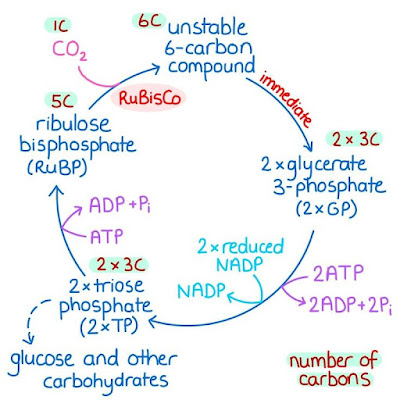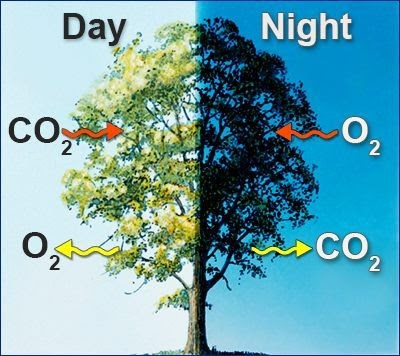Outlines
I. Introduction
A. Definition and significance of photosynthesis
B. Brief overview of the step-by-step process of photosynthesis
II. The Light-Dependent Reactions
A. Location and function of the thylakoid membranes
B. Overview of the light-dependent reactions
C. Detailed steps of the light-dependent reactions
III. The Calvin Cycle
A. Location and function of the stroma
B. Overview of the Calvin cycle
C. Detailed steps of the Calvin cycle
IV. Importance of Photosynthesis
A. Role in supporting life on Earth
B. Production of food, fuel, and oxygen
C. Contribution to regulating atmospheric levels of CO2 and O2
D. Impact on human society and the future of energy
V. The Evolutionary Significance of Photosynthesis
A. Role in shaping the Earth's atmosphere
B. The evolution of aerobic respiration
C. The development of larger and more complex organisms
VI. Conclusion
A. Recap of the step-by-step process of photosynthesis
B. The importance and ongoing research into photosynthesis
C. Interesting facts and potential future implications.
I. Introduction
A. Photosynthesis is the process by which green plants and some other organisms use sunlight to synthesize foods with the help of chlorophyll.
B. Photosynthesis is vital for the survival of almost all living beings on Earth as it produces oxygen and organic compounds that are used by all organisms.
II. The Light-Dependent Reactions
A. Thylakoid membranes are the sites of light-dependent reactions in photosynthesis.
B. The light-dependent reactions involve capturing sunlight to convert light energy into chemical energy.
C. The detailed steps of the light-dependent reactions include absorption of light, splitting of water, production of ATP and NADPH, and release of oxygen.
III. The Light-Independent Reactions
A. Light-independent reactions take place in the stroma of chloroplasts.
B. The light-independent reactions use the energy produced in the light-dependent reactions to synthesize organic compounds from carbon dioxide.
C. The detailed steps of the light-independent reactions include carbon fixation, reduction, and regeneration of RuBP.
IV. The Calvin Cycle
A. The Calvin cycle is also known as the light-independent reactions.
B. The Calvin cycle is the process by which carbon dioxide is converted into glucose with the help of ATP and NADPH produced in the light-dependent reactions.
C. The detailed steps of the Calvin cycle include carbon fixation, reduction, and regeneration of RuBP.
V. Importance of Photosynthesis
A. Photosynthesis plays a crucial role in supporting life on Earth by producing oxygen and organic compounds.
B. Photosynthesis is responsible for producing food, fuel, and oxygen that are essential for the survival of all organisms.
C. Photosynthesis helps in regulating atmospheric levels of CO2 and O2, which is crucial for maintaining the balance of the Earth's ecosystem.
D. Photosynthesis has significant implications for human society, including its potential to provide a sustainable source of energy.
VI. The Evolutionary Significance of Photosynthesis
A. Photosynthesis played a crucial role in shaping the Earth's atmosphere by producing oxygen.
B. The evolution of aerobic respiration was made possible due to the availability of oxygen produced by photosynthesis.
C. Photosynthesis also led to the development of larger and more complex organisms by providing a sustainable source of energy.
VII. Conclusion
A. Photosynthesis is a complex process that is vital for the survival of almost all living organisms on Earth.
B. Ongoing research in photosynthesis has the potential to revolutionize the way we produce energy and food.
C. Interesting facts about photosynthesis include the fact that it takes place in all green plants, algae, and some bacteria, and that the rate of photosynthesis is affected by various factors such as temperature, light intensity, and the concentration of carbon dioxide.
One line Facts….
1) Photosynthesis is the process by which green plants, algae, and some bacteria convert light energy into chemical energy.
2) The primary pigment involved in photosynthesis is chlorophyll.
3) The process of photosynthesis involves the capture and conversion of light energy, which is used to create ATP and NADPH.
4) Photosynthesis takes place in organelles called chloroplasts, which contain chlorophyll.
5) The light-dependent reactions of photosynthesis occur in the thylakoid membranes of chloroplasts.
6) The Calvin cycle, which is responsible for carbon fixation, occurs in the stroma of chloroplasts.
7) Photosynthesis produces glucose, a simple sugar that forms the basis of many carbohydrates.
8) Oxygen is released as a byproduct of photosynthesis.
9) The energy stored in fossil fuels is derived from ancient photosynthesis.
10) Photosynthesis is responsible for regulating atmospheric levels of carbon dioxide and oxygen.
11) Photosynthesis played a critical role in the evolution of aerobic respiration and the development of larger and more complex organisms.
12) The rate of photosynthesis is influenced by environmental factors such as light intensity, temperature, and CO2 concentration.
13) Photosynthesis can occur in C3, C4, and CAM plants, which have different adaptations for different environmental conditions.
14) The process of photosynthesis evolved early in the history of life on Earth, and likely played a crucial role in the development of the planet's atmosphere and ecosystems.
15) The efficiency of photosynthesis in converting light energy to chemical energy is a subject of ongoing research and innovation.
16) The study of photosynthesis has led to important discoveries in fields ranging from biochemistry and plant physiology to materials science and renewable energy.
17) The basic principles of photosynthesis are used in a range of emerging technologies, including artificial photosynthesis and biohybrid solar cells.
18) Photosynthesis is responsible for producing 99.9% of the Earth's oxygen.
19 The largest photosynthetic organisms on Earth are kelp forests.
20) Some bacteria can perform photosynthesis using infrared light.
21) The rate of photosynthesis is higher in red and blue light than in green light.
22) C4 plants have evolved to better adapt to hot and dry environments.
23) In the Arctic, some plants can perform photosynthesis at -20°C.
24) Photosynthesis has been occurring on Earth for at least 2.5 billion years.
25) The largest photosynthetic structure on Earth is the Great Barrier Reef.
26) Some plants can "turn off" photosynthesis to conserve water during droughts.
27) Chlorophyll is not the only pigment involved in photosynthesis - other pigments like carotenoids and phycobilins also play a role.
28) Some insects, like aphids, have evolved to feed directly on the phloem sap of plants, which contains sugars produced by photosynthesis.
29) The first photosynthetic organisms on Earth were probably cyanobacteria.
30) The Amazon rainforest is responsible for producing 20% of the Earth's oxygen.
31) Some types of photosynthetic bacteria can produce electricity.
32) The amount of light, water, and nutrients available can all affect the rate of photosynthesis.
33) The discovery of photosynthesis was first made by Jan Baptista van Helmont in the 17th century.
34) In photosynthesis, water is used to replace the electrons lost by chlorophyll.
35) The net equation for photosynthesis is 6CO2 + 6H2O + light energy → C6H12O6 + 6O2.
36) The study of photosynthesis has led to the development of renewable energy sources like solar panels.
37) Some plants, like cacti, perform a modified version of photosynthesis that minimizes water loss.
38) The type of chlorophyll found in plants is called chlorophyll a.
39) Other organisms, like algae and some bacteria, also perform photosynthesis using different types of chlorophyll.
40) Scientists are studying the potential of genetically modifying plants to increase their efficiency in converting sunlight into energy.
41) Photosynthesis is affected by environmental factors such as temperature, light intensity, and water availability.
42) The discovery of photosynthesis was a major milestone in our understanding of how energy flows through ecosystems.
43) Photosynthesis is responsible for the majority of the oxygen in Earth's atmosphere.
44) The study of photosynthesis has led to advances in agriculture, such as optimizing crop yields and reducing the need for pesticides.
45) The oxygen produced during photosynthesis combines with hydrogen to form water in a process called respiration.
46) Some organisms, like corals and sea anemones, have symbiotic relationships with photosynthetic organisms that provide them with energy.
47) The absorption spectrum of chlorophyll shows which wavelengths of light it can absorb for photosynthesis.
48) Photosynthesis is an important factor in the carbon cycle, which helps regulate the Earth's climate.
49) Photosynthesis is a key process in the production of biomass, which is important for creating sustainable sources of fuel and reducing dependence on fossil fuels.
50) Understanding the details of photosynthesis is crucial for developing technologies that can help combat climate change.









Comments
Post a Comment